Black-necked cranes seen in Tibet, China
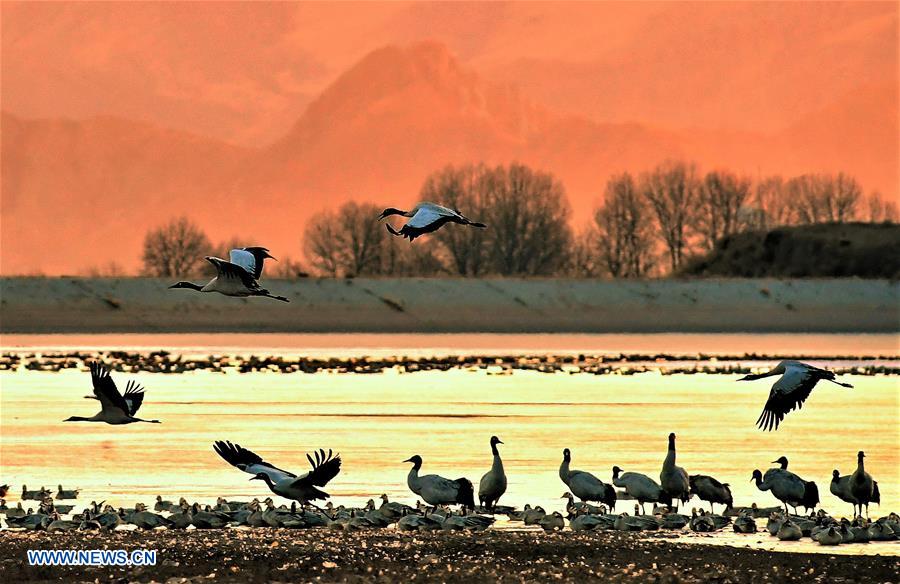
Black-necked cranes are seen in Linzhou County of Lhasa City, capital of southwest China's Tibet Autonomous Region, Jan. 1, 2018. Tibet has become the world's largest winter habitat for critically endangered black-necked cranes. It is currently temporary home to over 8,000 black-necked cranes, around 80 percent of the world's total population. (Xinhua/Zhang Rufeng)
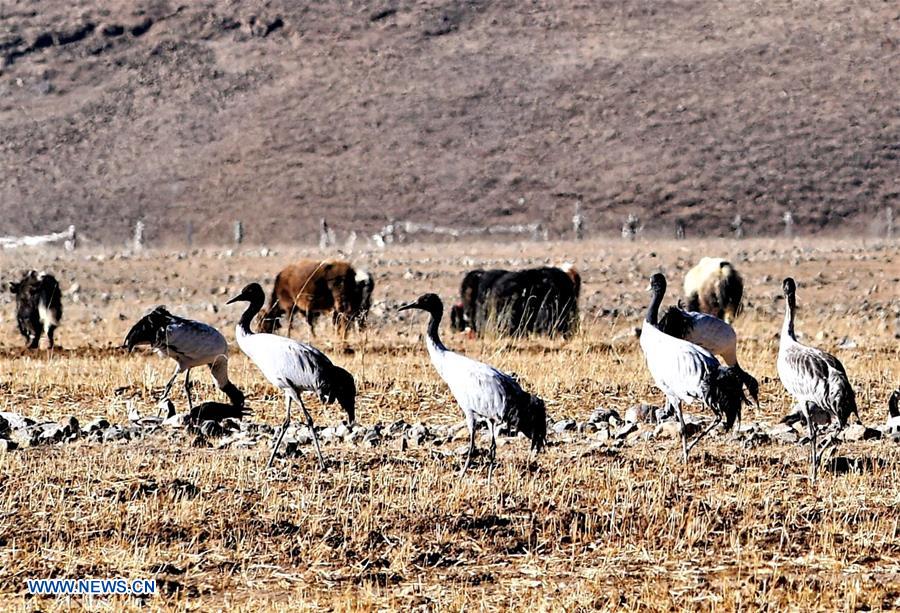
Black-necked cranes are seen in Linzhou County of Lhasa City, capital of southwest China's Tibet Autonomous Region, Jan. 1, 2018. Tibet has become the world's largest winter habitat for critically endangered black-necked cranes. It is currently temporary home to over 8,000 black-necked cranes, around 80 percent of the world's total population. (Xinhua/Zhang Rufeng)
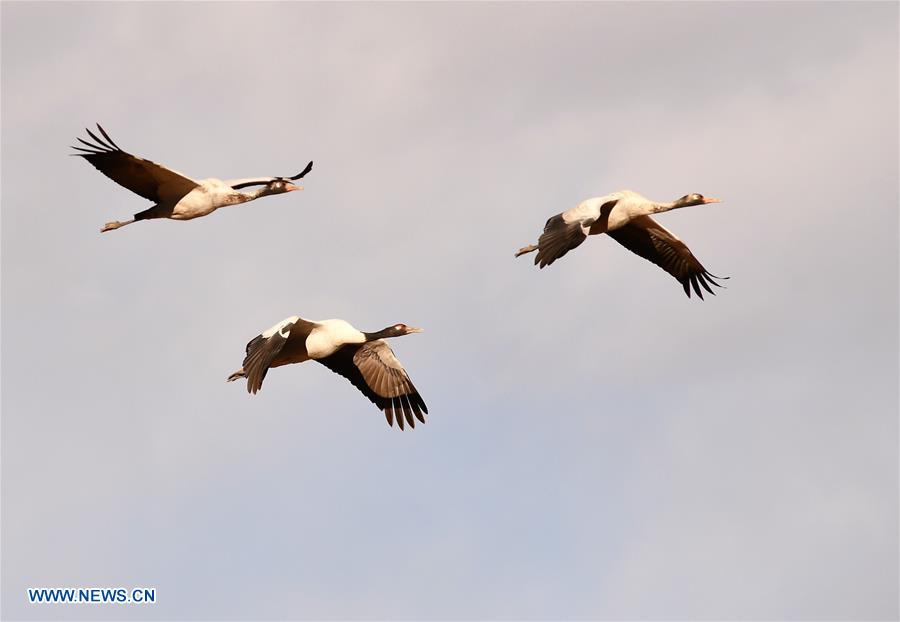
Black-necked cranes are seen in Linzhou County of Lhasa City, capital of southwest China's Tibet Autonomous Region, Jan. 1, 2018. Tibet has become the world's largest winter habitat for critically endangered black-necked cranes. It is currently temporary home to over 8,000 black-necked cranes, around 80 percent of the world's total population. (Xinhua/Zhang Rufeng)
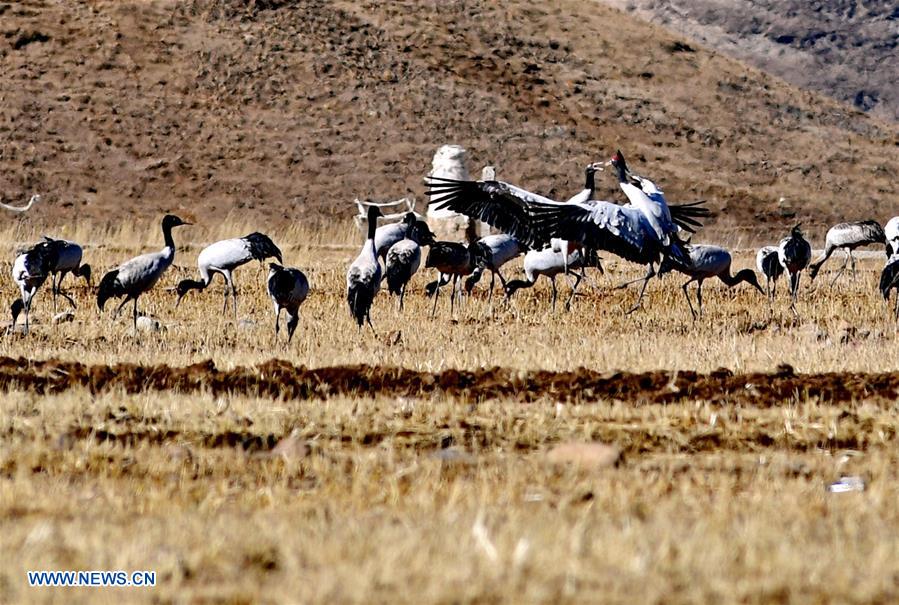
Black-necked cranes are seen in Linzhou County of Lhasa City, capital of southwest China's Tibet Autonomous Region, Jan. 1, 2018. Tibet has become the world's largest winter habitat for critically endangered black-necked cranes. It is currently temporary home to over 8,000 black-necked cranes, around 80 percent of the world's total population. (Xinhua/Zhang Rufeng)
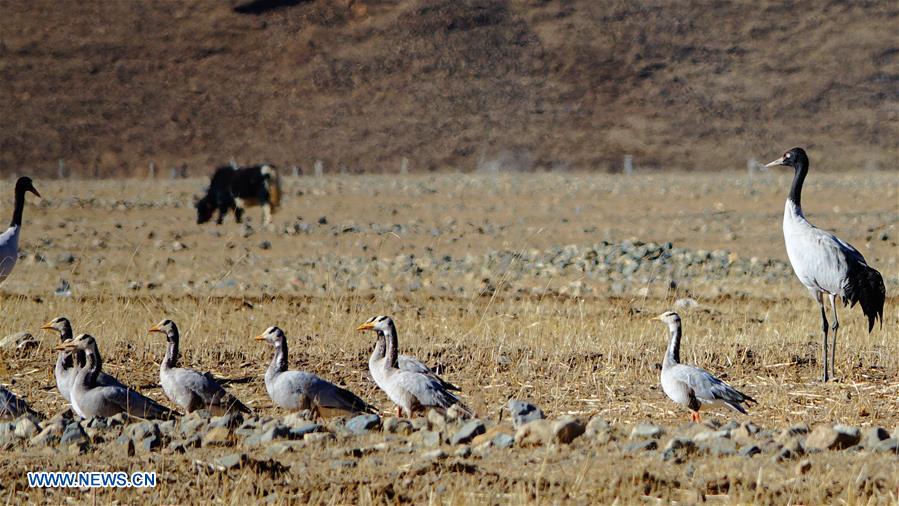
Black-necked cranes and bar-headed geese are seen in Linzhou County of Lhasa City, capital of southwest China's Tibet Autonomous Region, Jan. 1, 2018. Tibet has become the world's largest winter habitat for critically endangered black-necked cranes. It is currently temporary home to over 8,000 black-necked cranes, around 80 percent of the world's total population. (Xinhua/Li Jun)
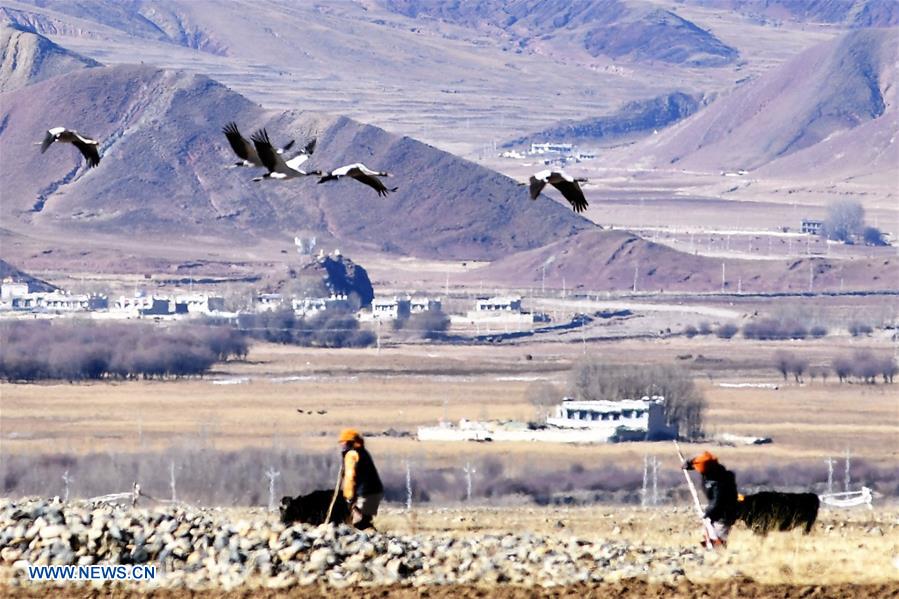
Black-necked cranes are seen in Linzhou County of Lhasa City, capital of southwest China's Tibet Autonomous Region, Jan. 1, 2018. Tibet has become the world's largest winter habitat for critically endangered black-necked cranes. It is currently temporary home to over 8,000 black-necked cranes, around 80 percent of the world's total population. (Xinhua/Zhang Rufeng)
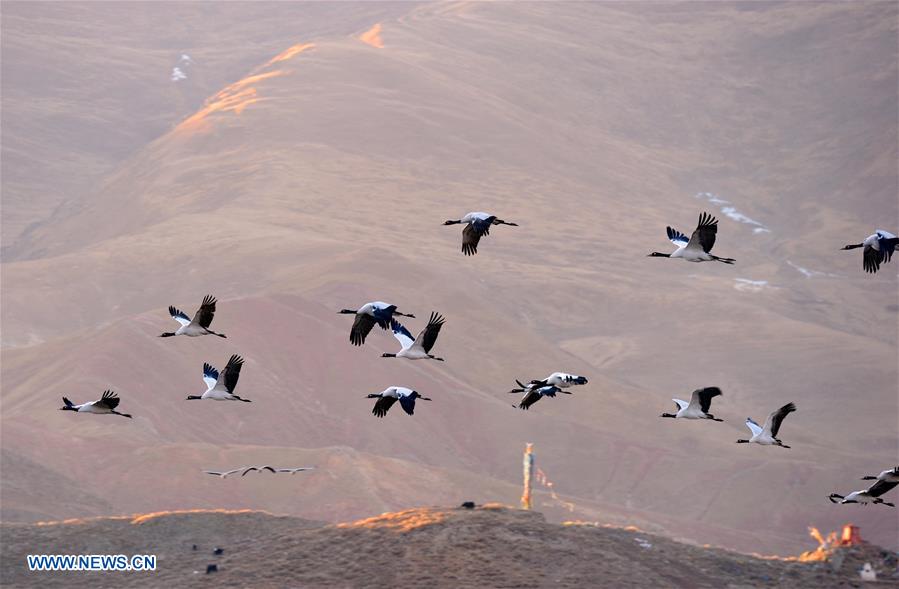
Black-necked cranes are seen in a nature reserve in Linzhou County of Lhasa City, capital of southwest China's Tibet Autonomous Region, Jan. 1, 2018. Tibet has become the world's largest winter habitat for critically endangered black-necked cranes. It is currently temporary home to over 8,000 black-necked cranes, around 80 percent of the world's total population. (Xinhua/Zhang Rufeng)
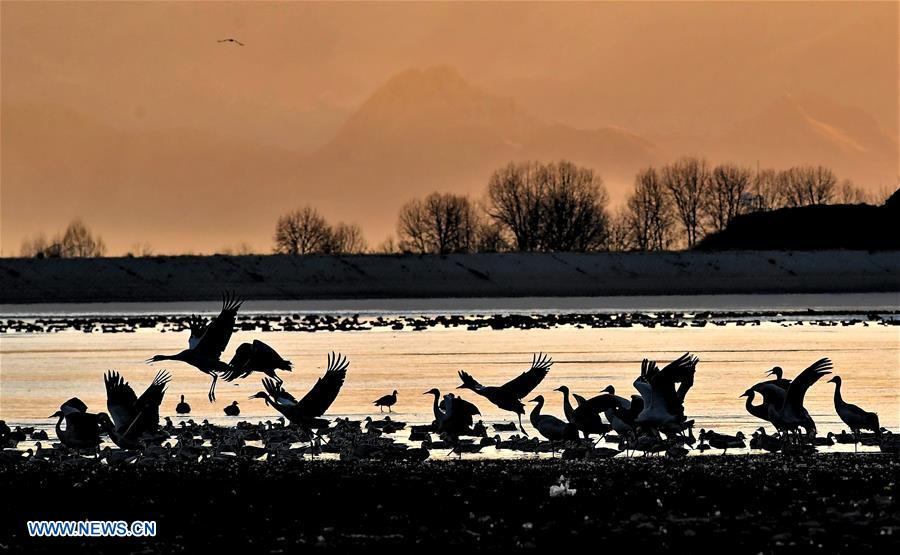
Black-necked cranes are seen in Linzhou County of Lhasa City, capital of southwest China's Tibet Autonomous Region, Jan. 1, 2018. Tibet has become the world's largest winter habitat for critically endangered black-necked cranes. It is currently temporary home to over 8,000 black-necked cranes, around 80 percent of the world's total population. (Xinhua/Zhang Rufeng)
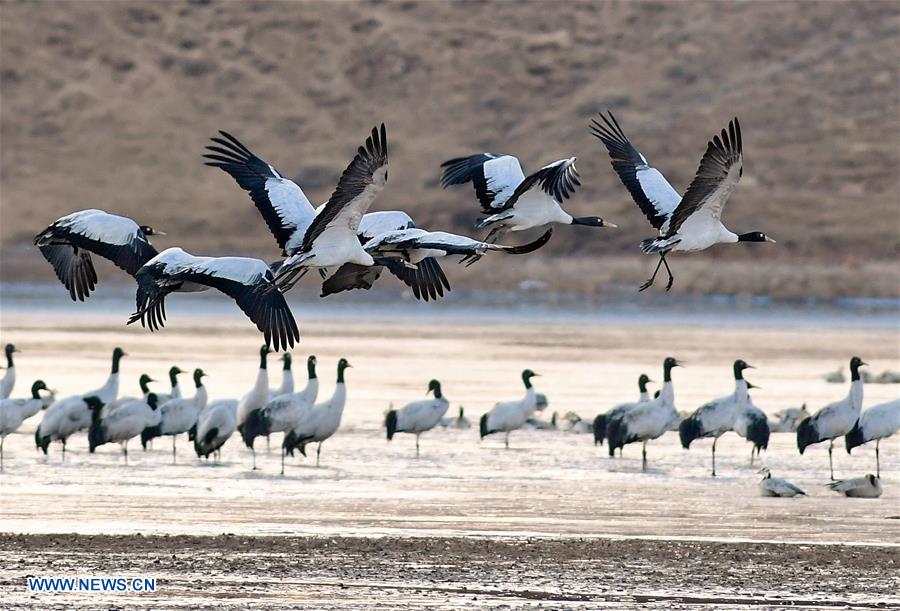
Black-necked cranes are seen in a nature reserve in Linzhou County of Lhasa City, capital of southwest China's Tibet Autonomous Region, Jan. 1, 2018. Tibet has become the world's largest winter habitat for critically endangered black-necked cranes. It is currently temporary home to over 8,000 black-necked cranes, around 80 percent of the world's total population. (Xinhua/Zhang Rufeng)
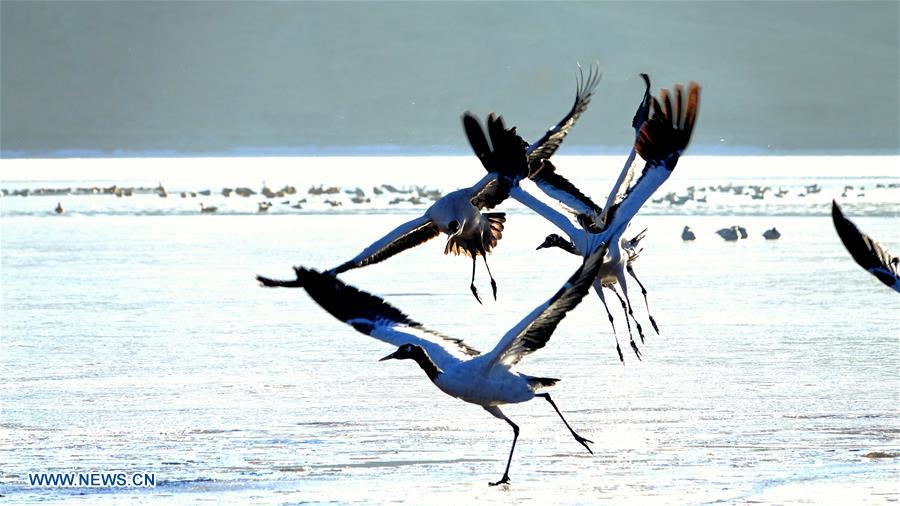
Black-necked cranes are seen in Linzhou County of Lhasa City, capital of southwest China's Tibet Autonomous Region, Jan. 1, 2018. Tibet has become the world's largest winter habitat for critically endangered black-necked cranes. It is currently temporary home to over 8,000 black-necked cranes, around 80 percent of the world's total population. (Xinhua/Zhang Rufeng)
Your Comment
Name E-mailRelated News
More >>-
;
-
-

-
Wintry scenes in Lhasa, Tibet
When winter comes, many species of birds fly to Lhasa to spend winter, a pleasant highlight of the city landscape.
-
-
-
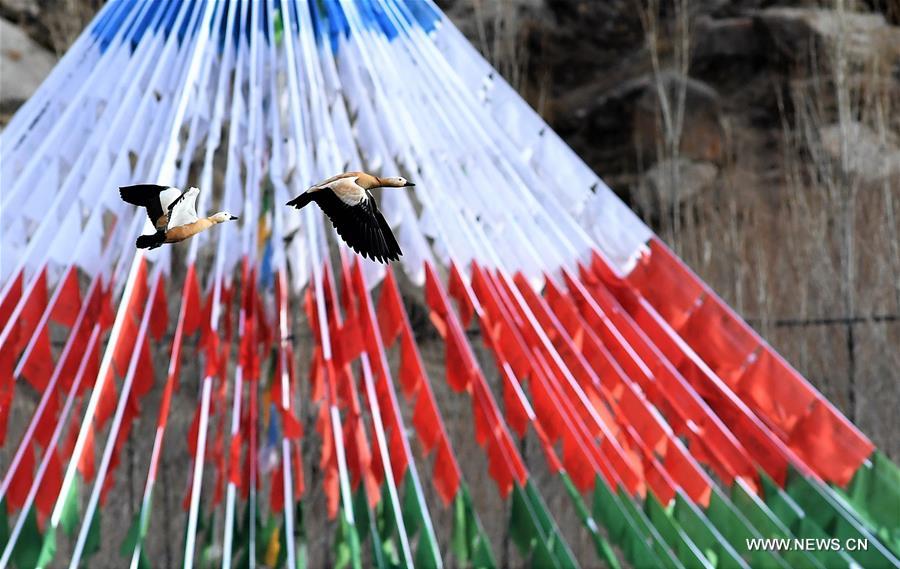
-
Diversified birds inhabit in Lhasa River of Tibet
The populations of bar-headed goose, ruddy shelduck and mallard have increased in Lhasa River.
-

